Barcelona Tourism Information
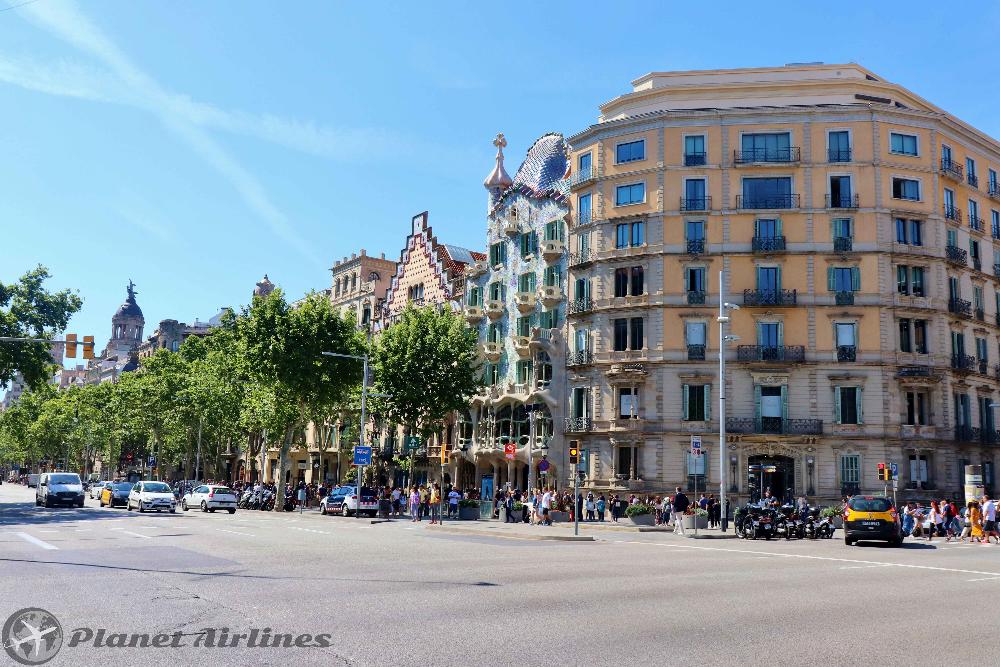
This is Spain’s second largest city. It's famous for its architecture and artistic heritage from Gaudi. It's a modern city with beautiful sand beaches and trendy metropolis which combines both sides of what every holidaymaker desires; sun and sea together with culture and art. Barcelona grew in popularity after the Olympic Games of 1992, held here.
Barcelona is home to some of the most famous and bizarre architecture in the world, and the playground of exciting modern artists like Joan Miro, Picasso and, of course, Antonio Gaudi. The city is the gateway to the Costa Brava and Costa Dorada, with their many popular beach resorts.
Year round Barcelona offers a warm climate except winter which can be too cold for a swim in the Mediterranean sea! July and August is peak season and can be very hot, up to 35 °C! Barcelona doesn't get much rain, with only a handful of rainy days every month; the wettest months are September, October and May, with thunderstorms occurring between August and November. Although the city gets plenty of sun, it can get foggy and cloudy, with sea fog especially common in early spring.
The ideal months to visit Barcelona, the Costa Brava, and the nearby resorts of Sitges and Vilanova are April to June and mid september to November, visitors can expect good, hot weather, but not boiling so you can enjoy the city's art scene and walking around it. However if you visit in July and August, despite the shade, locals desert Barcelona for the coastal resorts to escape the heat. Only tourists and the tourism industry workers stay during the peak Summer. Come prepared in the Summer months with good sun protection lotion, sunglasses, hats and in some cases hand fans!

Arriving in Barcelona is pretty simple. From the main airport, Terminals 1 or 2, you have metro (line L9 Sud) which connects to every corner of the city and the mains rail or bus stations. If you want to take the local bus, line 46 from Terminal 1 or 2 takes you to Plaza España, where you can walk if you stay in the centre. Alternatively you can take the "Aerobus A2" which is a little more expensive than the local bus but stops in all major stops in Barcelona city centre.
The metro reaches every corner of the city so travelling around is very easy in this practical city. Single tickets are €2.20 but buying the 10 trip card is the cheapest way for €10.20. There are also tourists passes. You can buy 48/72/96 hour passes. For more information visit Holabarcelona.com. Additionally you can find funiculars, cable cars and zip-trains that also work with the transport cards.
Streets in the city are well organised, forming a grid, which make it easy to navigate for those who are driving. You will also find good tips in using the local trains "Ferrocarrils de la Generalitat de Catalunya", "Rodalies de Catalunya" (identified by the orange trains and logo) and "cercanías", the Catalan autonomic trains, where you can discover some interesting places to the outskirts of the city.
Below you can find the transport maps available to download for Barcelona:
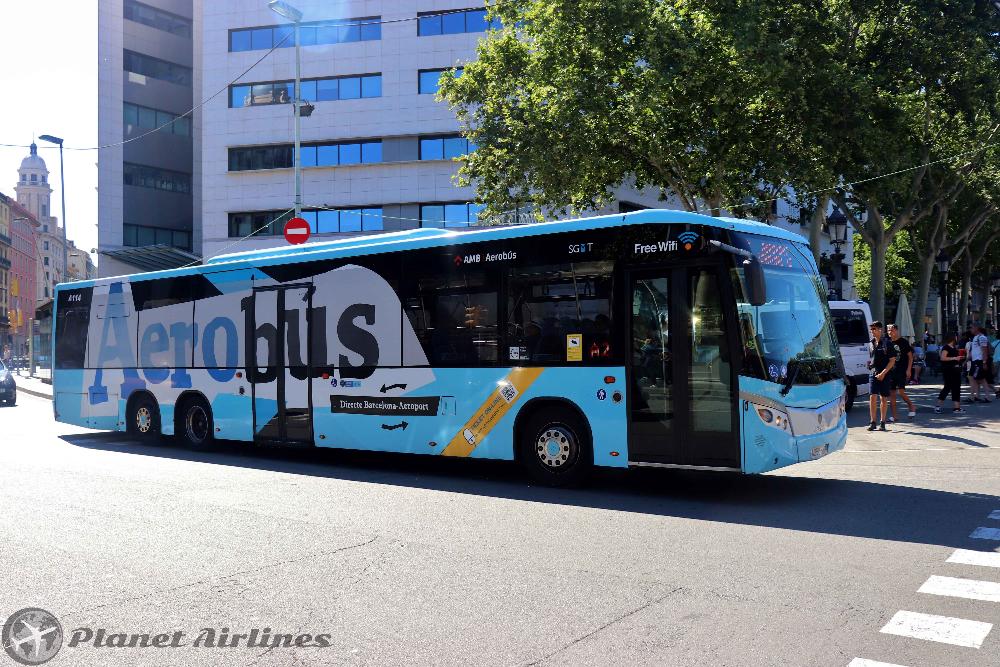

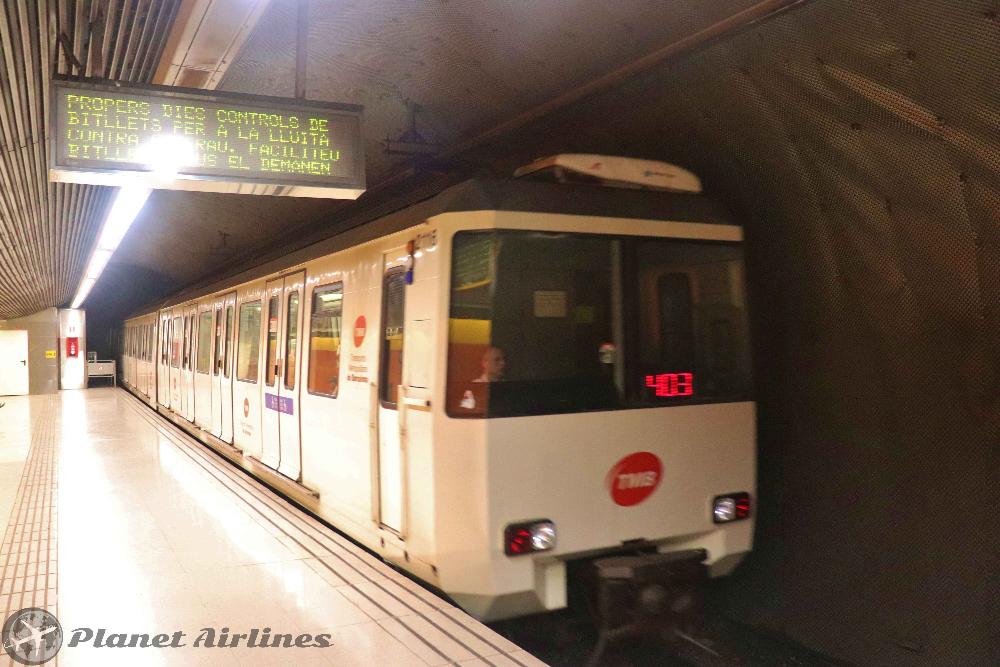
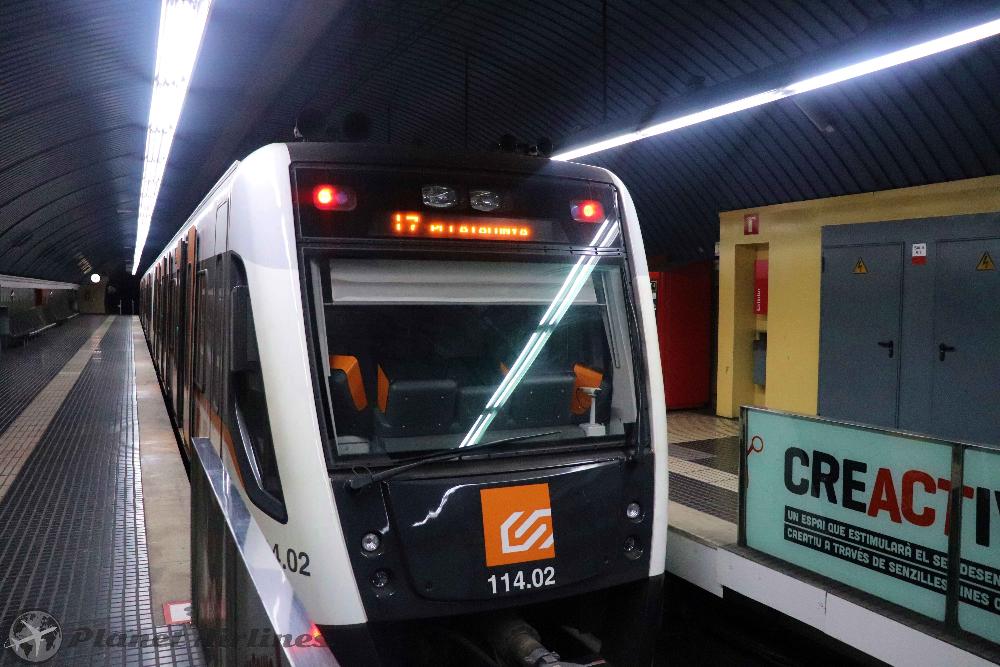
Barcelona's restaurants specialise in the delicious Catalan cuisine, typically adding the extensive use of garlic, olive oil and fish for many kinds of meals. Barcelona's restaurants usually open around midday for main courses and typically remain open until midnight. Residents opting to dine between 9pm and 10pm are the most common times, with many restaurants requiring even a reservation if you want to dine beachfront. Lunch times vary from 13.30 to 15.00h and you can find Menus del Dia (menu of the day) available for all inclusive courses.
The cuisine is authentic spanish, from local bars serving home made "tapas" to more elegant fine dining. But for the budget traveller you can find the best deals tucked away in the side streets where local bars offer good promotions and sometimes free food when you buy alcoholic beverages. For those wanting to try something more of the region, typical dishes in Barcelona are "Pa amb tomàquet" rustic Bread with olive-oil and tomato pulp, "Fideuà" noodle based Paella containing rabbit, chicken, and rich regional sausage. "Cannelloni" Italian style pasta tubes but It tends to have stuffed with stewed meat. Paella de Marisco: traditional paella made with seafood ingredients.
As for drink, Beer and wine are not to miss out when you eat in Spain, "Estrella" beer is locally brewed in Barcelona. Other drinks you can find are Sangria and Moscatel, a very young fruity sweet wine.


Barcelona can best be described as a visual city. It's one of the most artistic cities in the world and can be compared to a live museum in the open air. It is a sightseer's paradise with plenty of space for strolling, including seven beaches and 10 hectares of municipal parks throughout the city. From the hills of Montjuic and Tibidabo one can take in the scope of Barcelona and look down on the scenic views. Las Ramblas boulevard, the iconic pedestrian street running from the city centre to the Port Vella, is the most famous street. Barcelona is one of those cities blessed with plenty of outdoor attractions and activities.
Barcelona also carries a rich history. The city's architecture reflects its Roman heritage, and carries the mark of various influences since. Particularly notable is the Catalan modernisme architecture movement founded in Barcelona, and Gaudi's distinctive creations are among many of the city's buildings declared as World Heritage Sites.
Below you can find the highlights of Barcelona to keep you busy and entertained during your visit:
- Sagrada Familia (Barcelona Cathedral): This building is the symbol of Barcelona, one of the few landmarks of the world that is still being constructed and developed! It’ s no surprise that all the pictures with it include some building cranes! The idea was designed by modernist architect Antoni Gaudi, started in 1882, but to today it remains unfinished and an object of controversy. Gaudi worked on what was considered his masterpiece until his death in 1926, with his characteristic Art Nouveau style and creating a unique new interpretation of the Gothic architectural tradition. The extraordinary building is a UNESCO World Heritage Site despite being incomplete. When it is complete it will have 18 towers and is expected to be the tallest church in the world. The anticipated date of completion is 2026, (the centenary of Gaudi's death) but this may prove ambitious some say. The two completed facades of the church, the Nativity Facade and the Passion Facade, are very different but both incredible, an absolute must for travellers in Barcelona to see and admire.
To get there, take the metro to Sagrada Familia Station, line 2 or 5. Access to the Cathedral is exclusively by paid admission and costs €17 per adult, with additional visits or services costing up to €32.
❗Attention: Note that tickets to SAgrada Familia must be bought online one week before your visit to ensure you can get availability on your chosen date. Book here.
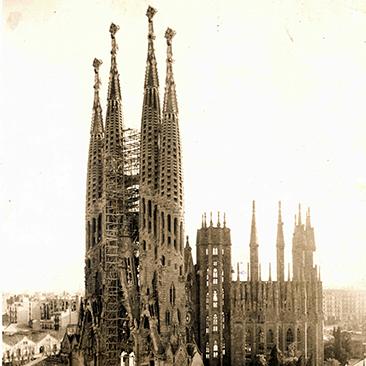
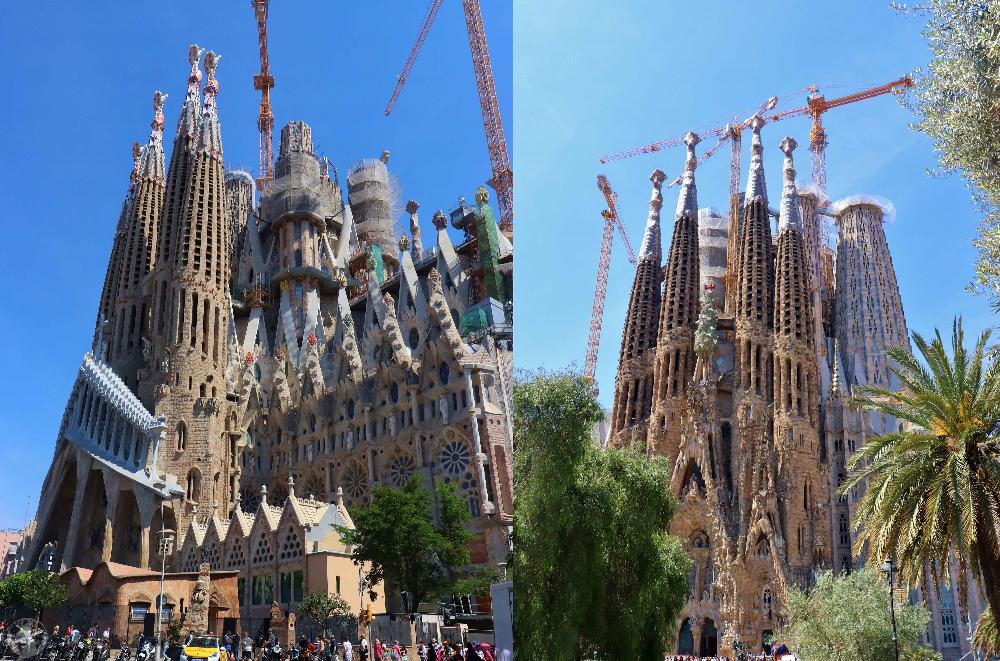
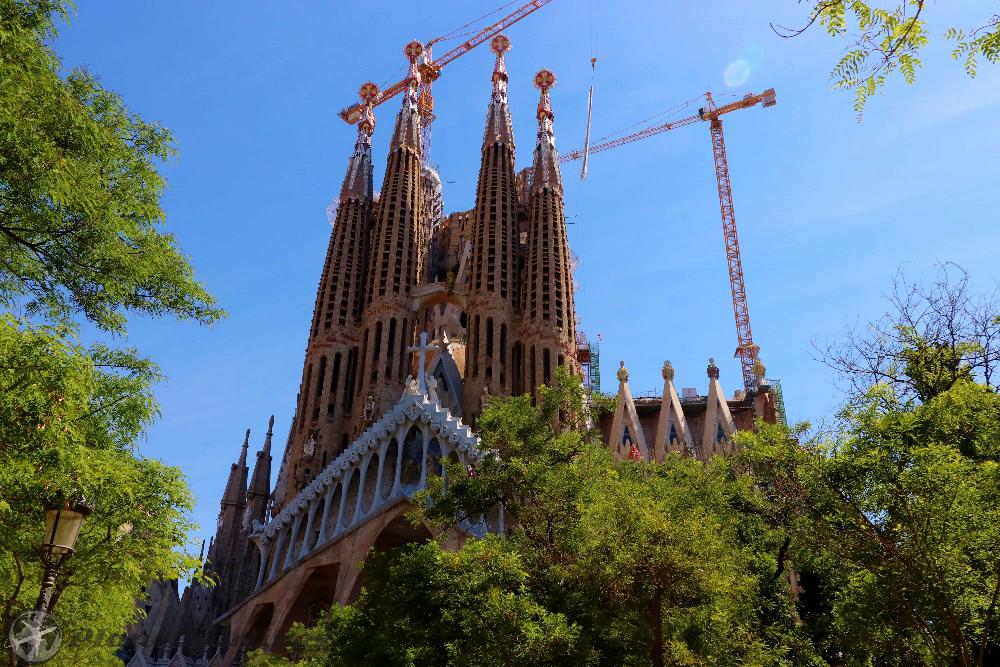


Parc Güell: Barcelona's most famous park. The park, sited on Camel Hill and offering splendid views of the city, was originally planned to be a garden city suburb, but only two houses were completed before it was turned into a public recreational park. The gardens are contain examples of Gaudi's strange and mesmerising work, including flights of stairs, columns and a plaza decorated with mosaics. Famous features include Gaudi's dragon, a mosaic lizard straddling two staircases and the Sala Hipostila, or Doric Temple, which is a forest of 88 stone columns. The pink fairytale house standing at the entrance to the park was once home to Gaudi and his niece, but is now a museum containing some Gaudi-designed furniture. To fully explore the park at your leisure you will need a few hours, carry water and sun cream, and don't forget the camera!
To access the park is free and walk around it. However the monumental side of it, (central park area) is closed to the public and can only visit by paying the minimum basic entrance fee of €10 per adult. Buying online will save y queuing time. Book at Parc Güell. If you buy a ticket, access to the BUS GÜELL is included. The shuttle service is a quick, direct way to get to Park Güell from Alfons X metro station (metro L4, BUS V19, H6). It only takes 15 minutes to reach Park Güell. Otherwise you can travel by metro to Joanic station (line 4) and walk uphill for 20 minutes or take direct bus 116 from that station to the park.



- Casa Mila and Casa Batlló: They are fantastic constructions by the creative genius Antonio Gaudi. They are both located on the Passeig de Gràcia avenue, which is a famous street of Barcelona for shopping. Although both houses are open to the public, they are not free. But admiring the architecture from outside is actually the best way to enjoy them!
- Casa Mila: commonly known as La Pedrera, was the last civil work that Gaudi undertook before dedicating all his time to the assembly of La Sagrada Família. The building is a UNESCO World Heritage Site and demonstrates the signature style of Gaudi with elaborate designs, globular shapes, assorted sculptures, colourful tiles and intricate details. Built between 1906 and 1912. Guided tours are available, in multiple languages, but these must be arranged in advance. Access charge is €22 per adult. Book your tickets here.
- Casa Batlló: From the outside the façade of Casa Batlló looks like it has been made from skulls and bones. The "Skulls" are in fact balconies and the "bones" are supporting pillars. Gaudí used colours and shapes found in marine life as inspiration for his creativity in this building. The building was designed by Gaudí for Josep Batlló, a wealthy aristocrat. The audio tour that comes with the entrance ticket gives you fascinating insights into Gaudí and his influences when designing this house. Tickets cost €25 per adult to access the house. Buy your tickets here.



- Las Ramblas: It's one of the most famous streets in Spain, if not Europe. it's a long continuous pedestrian avenue that cuts through Barcelona's Old Town to the Barri Gotic, from the Placa Catalunya to the city's port. It is lined with cafes, restaurants and shops. There are also some notable attractions along the way, like the Liceo Theatre and La Boqueria Market. Also look out for the iconic mosaic by Joan Miro as you walk over it, near the Liceu Theatre. The street is wonderful for shopping and attracts all sorts of buskers and street artists. It is a great area to visit at night, but travellers should note that the southern end of La Rambla becomes somewhat seedy after dark and is a sort of unofficial red light district. As well beware of your possessions and belongings as its an area for pickpockets.
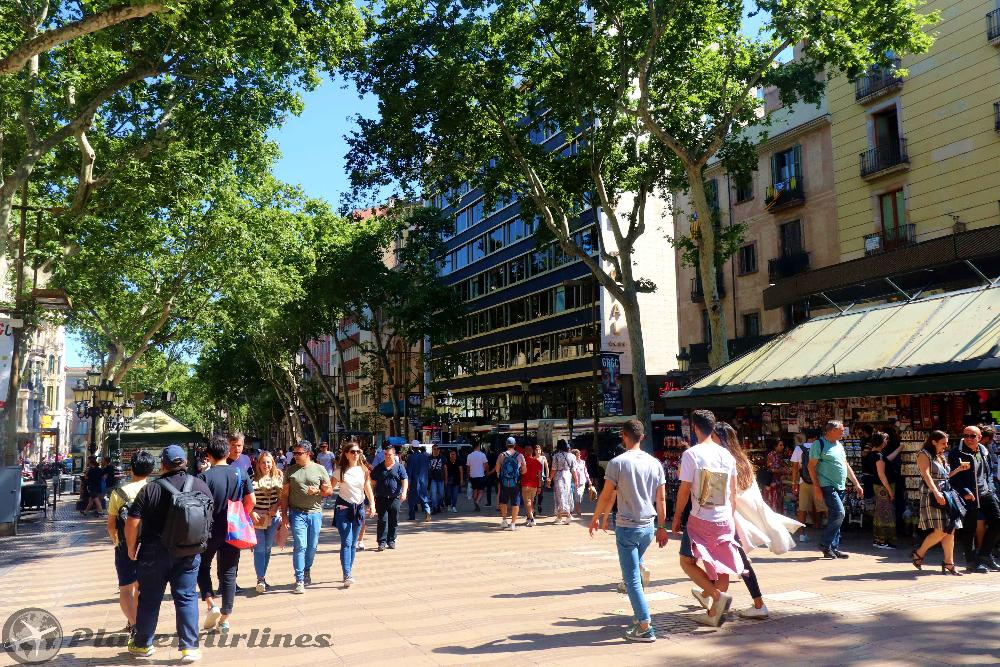

- Montjuic: is a hill overlooking the city centre of Barcelona, and where there are some major attractions of the city, including the main sites of the 1992 Olympics; the Poble Espanyol (a replicated Spanish village displaying art and architecture); the Joan Miro museum; and the National Art Museum of Catalonia. The hill has been the site of several fortifications over the centuries and the most recent of these, the Castle of Montjuic, dating from the 17th century, is still standing. The castle is now home to the Military Museum as well as the Museum of Comics and Illustration.
There are also some leisure attractions and cool green parks with fountains, popular for strolls on summer evenings.The magical fountains of Montjuic are a popular attraction that entertain on summer evenings with displays of light, colour and music. Accessible by cable car from Montjuic, the Barceloneta port district is below the hill. (€11 one way or €16.50 return by cable car). The eastern side of the hill is sheer, providing spectacular views over the city's harbour, directly below. The closest metro is Plaza de España where you can begin the walk up the hill.
- Barceloneta: The beauty of the city attracts thousands of visitors mostly for its baches, party atmosphere and style. This is the area where most foreigners love to visit to soak up the sun, swim, eat, practice sport and chill. It's the ideal place after excessive sightseeing and shopping. Windsurfing and kite surfing are popular activities on this always bustling beach. Marbella Beach is unofficially Barcelona's nudist beach, but although nudity is tolerated many people choose to keep their clothes on. Marbella is also frequented by gay and lesbian sun worshippers and sometimes hosts energetic beach parties. For a peaceful beach near the city centre look for Caldetes which is invariably almost empty. Although the famous Barceloneta strip is the most entertaining. However the best beaches are further out of the city: St Pol de Mar is an hour-long train ride from the city centre, but it is arguably Barcelona's most scenic beach, backed by picturesque hills and with a lovely little cove that has become a nudist zone. To get to Barceloneta take metro line 4 to Barceloneta metro station, or walk there from Las Ramblas for about 20 minutes.



- Tibidabo: is Barcelona's second landmark, located 6 Km northwest of the city. Tibidabo can be reached by funicular, which costs €7.50 return. Once up the hill, you will be rewarded by spectacular views. It's particularly popular on weekends with locals because it is home to the Parc d'Atraccions, an amusement park with some thrill rides and a renowned house of horrors. (tickets cost €28 for the park).
Tibidabo also features the soaring Torre de Collserola telecommunications tower, which offers visitors the chance to ride in a glass lift to an observation platform 115m high to enjoy a truly phenomenal view. There is also a large, interesting church called Temple del Sagrat Cor surmounted by a giant Christ statue. You can also climb the hill by walking on cooler days, via The Carretera des Aigues trail, perfect for keen walkers. It is an easy walk, which only takes about an hour, starting from the base of the funicular and ending at the church. Tibidabo provides theme park fun, cultural attractions and the best thing is it offers the best views possible of Barcelona! To get there take the regional train (line 7) from Plaça Catalunya to Tibidabo station. Then take bus 196 to the start of the Funicular lower hill entrance.



A nice day trip away from the city is to visit Montserrat. It's famous for its scenery but also for being a medieval monastery built on the side of the mountain.
To get there first you need to decide do you want the Cable Ride (Aeri ticket version) to the Monastery after the train journey from Barcelona or do you want the Cremallera Funicular ( Zip style Funicular) ride to the Monastery (Cremallera ticket version). In any case the most comfortable option is to take the regional train (line R5) from Plaza Espana station first and then you have the two options. You will need to get off the train at different stops depending on which one you decide to take. (Montserrat Aeri station for the cable car or Monistrol station for the Cremallera train)
Tickets are not interchangeable and you cannot change your mind and use the other route once you have purchased the ticket. You will need to specify if you want the Cable Car version or if you want the Cremallera funicular version of that ticket. The prices are the same and the names of the tickets are also the same which has led to some confusion with tourists. The cost of each ticket is €22 per adult including one option and the return train ride from Barcelona. Additionally if you want to go up higher with another steep funicular you take the combined ticket for €35.
Once you get up to the top, there are a few things to see. Sitting atop the mountain range is Santa Maria de Montserrat, a Benedictine monastery. Located inside of the monastery is a statue of the of the Black Virgin of Montserrat, one of the few black madonnas of Europe. This is Catalonia’s most important religious retreat, as many people make an overnight hike to watch the sunrise from the peak of Montserrat. The Benedictine Abbey and the Basilica are other places of interest, as the Black Virgin of Montserrat is located inside of the basilica. The Benedictine Abbey dates back to the 9th century. Santa Cova Chapel, offers stunning views from its location. To find it, follow a winding, paved trail along the mountain cliffs to the chapel. For those who wish to go up higher, you can take the Funicular de Sant Joan, it takes you to a very high observation point. From here, you can start the hike to Sant Jeroni, the highest peak on Montserrat, a 3 hour return hike. This hike gives you the best views over Catalonia. More info on Visit Montserrat.
Barcelona has a great offer of nightlife entertainment, with so many tourists out in the street in the hours of dark, the city caters for all trends, styles and pockets! Alfresco dining is a good way to start an evening and has become a way of life in many of the city's squares. Good spots to sip on a glass of wine and enjoy time go by are the Plaça del Sol in Gràcia and Passeig del Born, Plaça del Pi and Plaça Reial in the Old Town.
Barcelona is a trendy city with a very rapid changing club scene. During the summer, chiringuitos (beach bars) open along the white sands of Barcelona's urban beaches, each with its own vibe and music, and are popular with both locals and tourists.
Key nightlife spots include Barri Gòtic, which despite its medieval atmosphere, boasts a great selection of bars and clubs to choose from, though it is best to keep your possessions close to your body as pickpockets operate in these areas. Las Ramblas is also full of party venues. This is where you'll find some of Barcelona's most popular and trendiest nightclubs and bars. 🌈L'Eixample, north of the city, is the place to go to enjoy Barcelona's gay scene.
Port Olimpic is great for night owls, with plenty of bars, clubs and great seafood restaurants, while the yacht marina is a great place to enjoy sundowners on a warm summer's evening. Barcelona is also a city full of culture. There are plenty of regular performances of ballet, music, dance and opera at various venues such as the Joan Miro Foundation and the Greek Theatre, or the Liceu Opera House. And for a more relaxed evening, visitors can enjoy Flamenco at various venues throughout the city such as Tablao de Carmen and Travel Bar Flamenco Guide, which are both located in the old quarter's centre.
Barcelona's main shopping area runs from Las Ramblas, through Placa de Catalunya, along Passeig de Gràcia, and up Avenue Diagonal. Most of it is pedestrianised and pleasant to navigate on foot. The Tomb bus is a service specifically tailored for shoppers in the city, covering all the major retail centres; it departs every seven minutes from Catalonia Square and makes 28 stops up until Placa Pius XII. Tickets can be bought on the bus.
Barcelona is a very fashion conscious place and several big names such as Giorgio Armani, Burberry and Bally are represented in exclusive stores in the city while there are also local Spanish mega-fashion stores like Zara, Mango and Adolfo Dominguez. Travellers on a budget might want to take advantage of seasonal sales. Winter sales officially start around 10 January and summer sales around 5 July; savings are generally high, between 50 to 70 percent, during these sales.
When booking your accommodation in Barcelona, consider it's one of the most popular places to travel now in Europe, thanks to its good weather and beaches. There are many possible options from Hotels, private rooms via Airbnb, apartments or resorts which are offered by the tour agencies when bough as a package. (flight + Hotel).
However, it can be an expensive city when travelling high season and hotels are generally good quality but pricey, at over €50-70 per night. Travelling midweek and staying away from the heart of the city and near to public transport will make you save money. If you are on a budget, consider the many hostels available around the city and private accommodation.
An ideal first trip to Barcelona would last for 3 nights for the city to explore its art scene and culture. However there is a lot to see and many attractions out of Barcelona, like sites and beauty spots, which are all worth a visit. If you want to explore the outskirts, relax and sunbathe then a week would be perfect to maximise your stay.
Barcelona Photo Slide 📷






















.png)